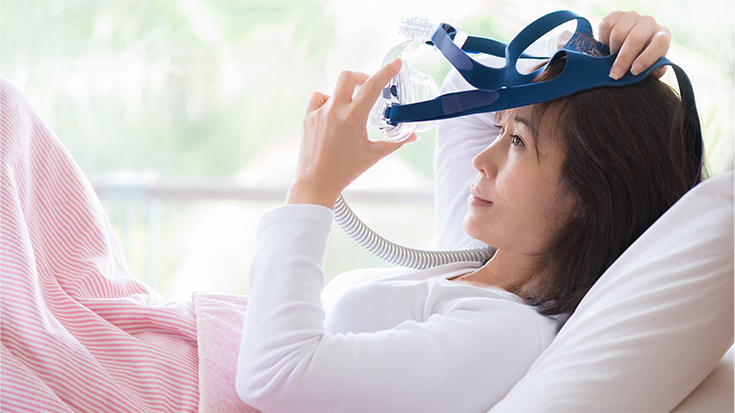
According to Adam Mullaly, BSRT, RRT, AE-C, home oxygen and/or home noninvasive ventilation (NIV) can offer patients the ability to stabilize known physiologic deficiencies contributing to their chronic respiratory failure.
“This inherently has the potential to improve outcome measures, quality of life, and prevent further physiologic problems and/or deterioration,” Mullaly said.
Mullaly, along with Kimberly Wiles, BSRT, RRT, CPFT, FAARC, and Angela King, BS, RRT, RRT-NPS, RPFT, discuss the merits of home oxygen and mechanical ventilation and offer tips to help RTs.
Merits of home therapies
“My experience has been that, for most ventilator users, being at home with their family, pets and familiar surroundings is preferable to living in an institution,” King said.
She explains that home ventilator users typically “have more autonomy over things like their daily schedule, their diet, their clothing, their room décor and their musical selections.”
“Additionally, patients often report a strong desire to avoid hospitals, clinics and doctor’s offices, especially during cold and flu season—expressing the feeling that they are safer at home,” King said.
For Wiles, being able to provide patients with oxygen in their home allows patients to self-manage their disease.
“This allows patients to recover at home and may only be needed short term,” Wiles said. “Oxygen has shown to increase exercise tolerance, increase quality of life and life expectancy, improve mental alertness and decrease fatigue.”
“In my 30+ years as an RT, I’ve seen home ventilator patients skydive, horseback ride, summit a mountain, go boating, speed around in a Corvette, attend rock concerts,” King said, “and do pretty much everything the rest of us do!”
Tips for helping patients
- Reduce stress
To help reduce stress, King and her team work to get the patient’s room completely organized, with the home equipment set and ready, well before the discharge date. - Train the family
“Also, the earlier the RT can complete the family’s training on the home ventilator, the more time the family has to learn and observe what is normal with regard to the home ventilator versus what signals a potential problem,” King said. “Being confident and knowledgeable helps to reduce the family’s anxiety.” - Address sleep concerns
She continues to explain that the RT should forewarn family members that there is often a reduction in sleep and/or sleep quality for family caregivers of ventilator users. This reduction of quality sleep time may be associated with an increased risk of depression.[1]“Parents report having to sleep with ‘one ear open’ for ventilator alarms—never fully relaxing,” King said. She’s also had parents report having a trusted friend or family member sit with the patient with “firm instructions to immediately awaken Mom or Dad for any ventilator alarms allows the parents to relax and sleep soundly.” - Learn and use technology
According to King, technology, such as alarms and data tools, is helpful for RTs to help their patients and families.“Home ventilators with Alarm Logs and Event Logs allow the RT to see what alarms may need adjustment,” King said. “The use of phone technology such as FaceTime can be helpful when trouble-shooting a ventilator situation.” - Understand the equipment
According to Wiles, RTs need to understand the oxygen equipment that is used in the home as well as the limitations that exist with the home oxygen equipment.“The RT is key in providing patients with education that promotes safe oxygen usage in the home,” Wiles said. “The RT also helps by conducting a needs assessment based on prescription, cognitive level, functional status and home environment limitations.” - Know the Barriers
Mullaly explains that “it is important for the Respiratory Therapist to understand, acknowledge and help address barriers of adherence to these prescribed therapies; barriers can include: a lack of understanding of why the therapies are prescribed, nonspecific goals of therapy, stigma of these therapies related to their illness, disposable medical equipment company support and appropriateness of equipment (specifically relating to oxygen therapy), etc.” - Offer support
“Respiratory Therapists should offer as much support, teach back focused education and encouragement as the patient needs, which can help them build confidence in using these therapies effectively and as prescribed,” Mullaly said. “The availability of reliable and inexpensive pulse oximeters also provides the opportunity to educate patients on monitoring their SpO2 value in a way that is both reassuring to the patient; as well as, offering an objective data point that indicates the need for provider communication.” - Look at the whole patient
“Although often LTOT and NIV are lifelong commitments for patients, it’s worth noting that there are those patients where quality rehabilitation and lifestyle changes may in fact lead to these therapies no longer being needed,” Mullaly said. “Respiratory Therapists can play a key role in helping facilitate these interventions—particularly pulmonary rehabilitation—and offering these patients an optimistic outlook from a trusted healthcare provider.”
1 – Meltzer, LJ. Pediatr Nurs. 2010 August ; 25(4): 250–257
Email newsroom@aarc.org with questions or comments, we’d love to hear from you.













